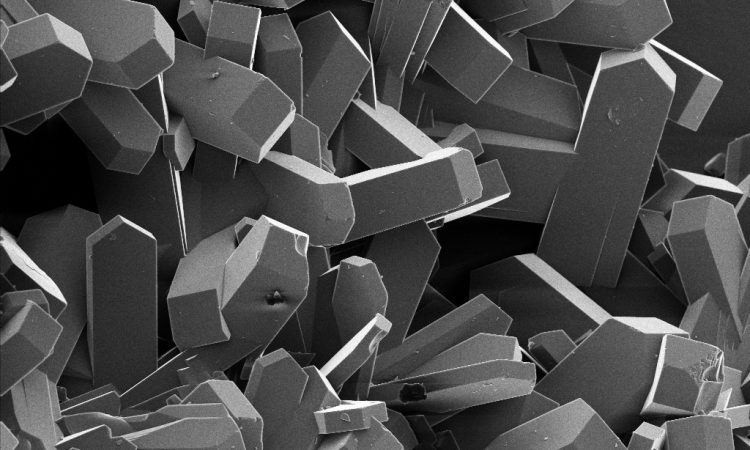Researchers have developed a new way to recycle blended fabrics.
Got Carrots?… Harnessing Nature’s Enzymes to Reduce Ketones to Chiral Alcohols
Got carrots? Researchers have developed a new way to enantioselectively reduce ketones to alcohols.
Electron spin selectivity effects can be harvested in asymmetric catalysis
A deeper understanding of spintronics enables the generation of new technologies using chiral molecules.
A Cheap Fix for Diffuse Methane
Converting methane to carbon dioxide could be a key strategy in tackling climate change.
Go Ask Mother Nature—she’s got an answer
An overwhelming majority of scientists are in agreement—and that never happens—something must change before we reach the so-called “point-of-no-return”. The onset of the industrial era (and the associated benefits) encouraged a system that pollutes our environment in search of the largest possible profits. More recently, our voices have gotten louder, and large groups of society have dedicated themselves to uncovering the solutions to these problems. Perhaps, in this regard, Mother Nature still has lessons to offer.
Massively increased antibiotic synthesis via biocatalysis
Treating those with active COVID-19 requires antiviral drugs such as molnupriavir. However, the drug’s synthesis is lengthy and low yield – can enzymes be used to optimize both time and the end result?
Molecular Nanoparticles: Large Molecules to Prevent Oxidative Stress?
Maybe chemistry can save us—in this case, synthetic chemists have developed a family of lanthanide-oxo molecules and investigate their capabilities as radical species scavengers, with a possible future in the clinic to mitigate various diseases onset by oxidative stress (get antioxidants into your diet, people!).
µMap ID – a new technique for identifying the targets of drug candidates
Finding the target of drug candidates is often challenging. A new technique called µMap ID may speed up this process.
Feeling Floral: Using Flowers as Sustainable Catalysts
Catalysts can make reactions more efficient and less wasteful, but some metals catalysts are toxic and can cause environmental damage. Researchers have found an alternative catalyst made from the flowers of St John’s Wort and are using it to make chemistry more eco-friendly.
Organic Synthesis With A Side Of Salt
The addition of common table salt can transform the workings of a complex organic chemistry reaction.
What happens when you add crap to graphene? Literally.
Graphene’s amazing properties make it one of the most popular new materials in recent years. But what if we could improve it with an unlikely additive?
Did life come from the depths of the ocean?
Amino acids were found in the Atlantis Massif, under the ocean floor. Is their non-biological synthesis the origin of life?
5 Facts About Catalysts You Might Not Know
Catalysis is a common chemistry concept, but there are many intricacies involved. Check out some of these lesser-known facts!
Making computers from molecules – Molecular Turing Machines
In this article, explore the tiny molecules that could be used for computational work in future of smartphones! Inspired by your own body, machines made from molecules could be the next generation of computers!
Flavins photoactivation of prodrugs: let’s shine a light
How can flavin and flavoprotein help with cancer therapy? A very nice example of biorthogonal chemistry and its potential.
Hitting the Jackpot – Evolving Artificial Biocatalysts Through Randomization
Random change has been powering life’s evolution for billions of years. Can it also power the evolution of artificial biomolecules?
Always Use Protection: Preventing Catalyst Degradation with Coatings
Catalysts are critical components of many industrial processes. Unfortunately, many promising catalysts degrade over time. Here, researchers show that some catalysts can be protected by coating them with another material.
Controlling Nano-Sized Machines to Deliver Drugs in the Body
Tiny machines fixing disease inside the body may not be science fiction for much longer! Let’s learn about making and controlling nanomotors that could one day deliver drugs from within!
Using Heat to turn Water into Fuel
The development of clean, efficient, and renewable forms of energy is a critical scientific challenge. Plants have already figured out how to do this via photosynthesis. Can we develop a process that mimics this?
Enhanced Fisher-Tropsch Chemistry Inside Carbon Nanotubes Containing Iron Nitride Nanoparticles
Title: FeN nanoparticles confined in carbon nanotubes for CO hydrogenation Authors: Zhiqiang Yang, Shujing Guo, Xiulian Pan, Junhu Wang, and Xinhe Ba Journal: Energy and Environmental Science Affiliation: * State Key Laboratory of Catalysis, Dalian Institute of Chemical Physics, Chinese Academy of Sciences Above: Cartoon depicting Iron Nitride…



















